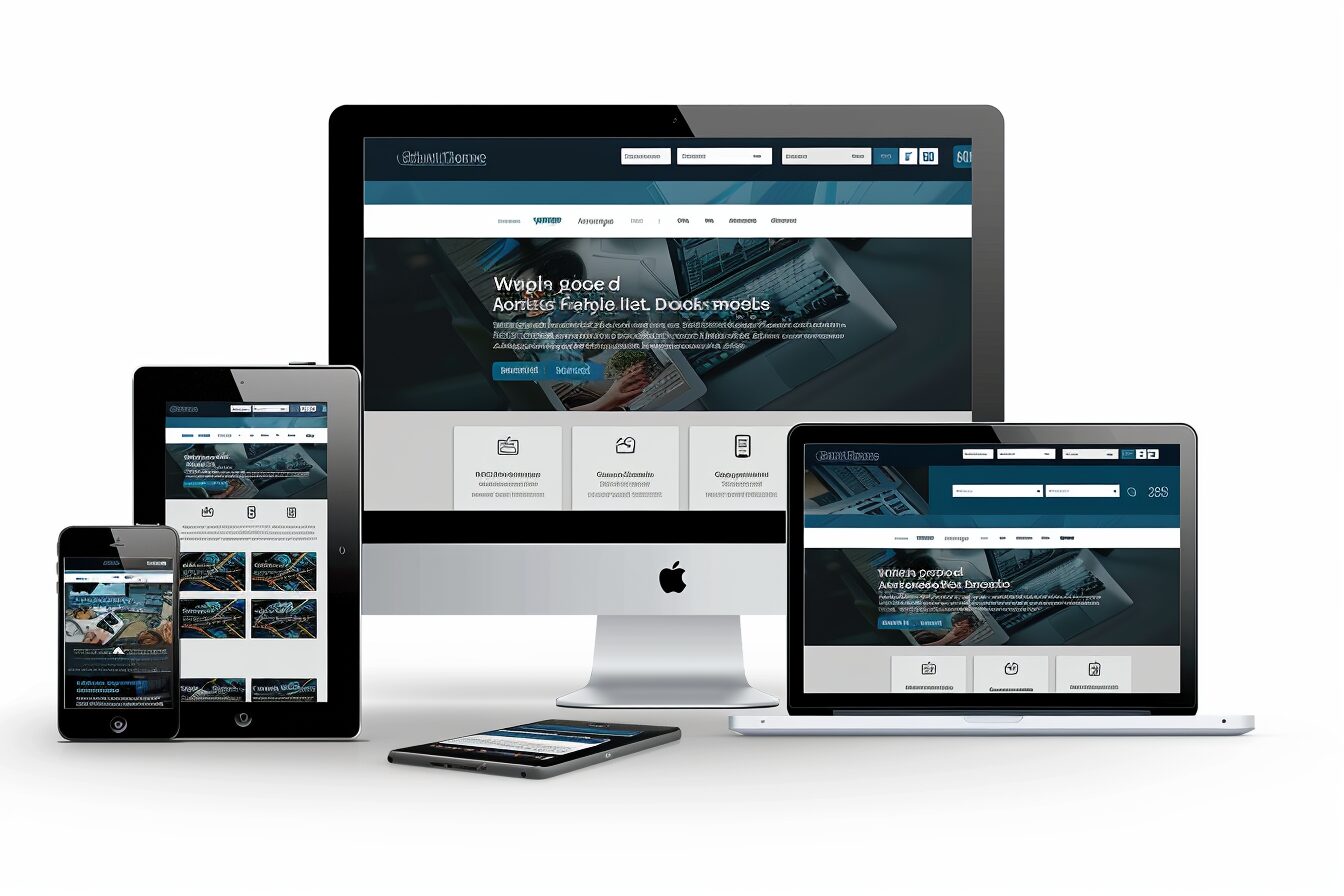Understanding the Basics of Shopify Store Setup
Creating an online store on Shopify can feel like an overwhelming task, but with a firm grasp of the basics, this task becomes more manageable. The first step involves choosing a suitable business name and signing up on the Shopify platform. Once the registration process is complete, the platform will guide you in setting up your online store. The entire process is user-friendly and designed specifically with non-technical users in mind.
One crucial aspect of the initial setup process is defining your business’s logistic details. These logistics include shipping methods, payment options, and return policies. All these factors are essential, as they can significantly influence your customer’s experience on your site. The Shopify platform also allows you to adjust these details at any point, giving you the flexibility to adapt as your business grows and changes.
Choosing the Right Theme for Your Online Store
The selection of a proper theme is a pivotal step in the setup of your online store on Shopify. It sets the groundwork for how your products will be presented to your consumers, and often, it’s your customer’s initial experience with your brand. Hence, it requires a thorough examination and thoughtful consideration. You must pick a theme that aligns with your business style, the demographics of your target customers, and the type of products you offer, and that offers a smooth and intuitive browsing experience.
Emphasise the functionality when picking a theme. A visually appealing design might draw the customer’s initial attention but an unorganised or confusing layout could lead to a quick exit. Your theme should offer easy navigation and a clean, organised layout that effortlessly directs customers through your product offerings and to the checkout. A mobile-responsive theme is also a prerequisite in today’s mobile-first online landscape, to ensure the best shopping experience for your customers. Shopify offers a variety of themes, both free and premium, which you can filter based on your business needs.
Optimising Your Shopify Store for Better User Experience
One crucial aspect that plays a significant role in customer retention and overall store performance is the user experience. A well-optimised Shopify store ensures that visitors do not just browse, but also make purchases, thus increasing conversion rates. Not only does it have the power to enhance customer satisfaction, but it also contributes immensely to the establishment of a strong online presence. To optimise your Shopify store, elements such as site speed, site navigation, and mobile responsiveness should be your paramount focus.
Site speed, for instance, is a pivotal factor that can largely influence a customer’s buying decision. Slow-loading websites can test a visitor’s patience, leading to high bounce rates. Therefore, ensure that your Shopify store has an optimum load speed. Similarly, site navigation should be easy and intuitive, making it simple for customers to find the products they are looking for. Lastly, given the rise in mobile customers, mobile responsiveness is no longer optional but a necessity. A mobile-optimised site ensures that your store provides a seamless shopping experience across all devices.
Incorporating Brand Identity into Your Shopify Store
Building a strong brand identity on your Shopify store goes beyond merely incorporating your company’s logo and colours. It is about ensuring a consistent application of elements like typography, icons, photography, and even the tone of voice in every form of communication within your store. Over time, this consistent use of elements can contribute to fostering trust, loyalty, and recognition. It can create a unique persona for your online store that customers can resonate with and genuinely appreciate.
Driving forward, when incorporating brand identity, it’s not just about aesthetics; it’s about reflecting your brand’s core values and what you stand for. It requires thorough knowledge about your target audience, their needs, wants, and pain points. Therefore, using a customised theme that reflects your brand’s personality, the products or services you offer, and who you’re trying to attract is pivotal. It is advisable to choose a design that not only looks visually appealing but also aligns with your customer’s expectations, thereby providing them with an enriching shopping experience.
Here are some key points to consider when incorporating brand identity into your Shopify store:
• Understand Your Brand: To successfully incorporate your brand identity, you must first understand what your brand stands for. This includes knowing the core values of your company and how they align with the products or services that you offer.
• Know Your Audience: Understanding who your customers are is a crucial element in establishing an effective branding strategy. This requires knowledge about their needs, wants, and pain points to ensure that the elements used resonate with them.
• Use Consistent Elements: It’s important to maintain consistency across all forms of communication within your store. This can include typography, icons, photography and even tone of voice. Over time this will help foster trust and recognition from customers.
• Choose A Customised Theme: When it comes to design aesthetics on Shopify, using a customised theme can be very beneficial. The chosen theme should reflect not only the personality of the brand but also align with customer expectations providing an enriching shopping experience.
• Reflect Core Values Through Design: The design aspects should not just be visually appealing; they should also effectively communicate what your business stands for. Ensure that every part of the design reflects these values so as to create a strong connection between customers and the brand.
In conclusion, creating a strong brand identity on Shopify goes beyond visuals; it’s about ensuring that each aspect resonates with customers while reflecting core values thereby building trust over time.
Enhancing Your Store’s Appearance with Shopify’s Built-in Features
When setting up an online store on Shopify, leveraging the platform’s in-built features can maximise visual appeal and improve overall customer engagement. Shopify provides numerous features that allow retailers to enhance their storefront’s appearance effortlessly. From custom colour schemes and typography to professional templates and intuitive product image galleries, the platform offers numerous opportunities for enhancing aesthetic appeal and functionality. It is essential to understand these in-built features better to make the most of them.
One of the major benefits of Shopify’s built-in features is that they enable non-technical users to make significant changes to their store’s layout and design with minimal knowledge of coding. Users can experiment with different themes and layouts, switch colour combos, and use predesigned templates until they find a store look that aligns with their brand. It’s worth noting that even minute tweaks on a Shopify store can make a significant difference in its aesthetic appeal. Therefore, it’s always recommended to understand and make the most of these features for an improved store appearance.
Unlocking the Power of Shopify Apps for Store Customisation
Shopify Apps play an indispensable role in fine-tuning your online store to meet unique business requirements and provide a customised shopping experience. They help extend the functionality of your store beyond the built-in features Shopify offers. From inventory management and email marketing to customer retention and on-site SEO, there’s an app for each aspect of your online business. This vast arena of apps, often overlooked by beginners, can be the key to setting your store apart from the competition.
Many of these apps synergise with the basic framework of your Shopify store, offering new features and tools that can be integrated seamlessly. For instance, some apps offer advanced product filters, allow customers to create wish lists, or enhance your store’s search functionality. Others can assist with order tracking, provide detailed analytics, or enable live chats for instant customer support. The trick lies in identifying the right set of apps that complement your business model and customer expectations while providing the best return on investment.
Implementing Effective Product Display Strategies
Product display is an integral part of any eCommerce platform. It refers to the way products are presented or displayed to potential customers. A well-thought-out product display strategy can greatly influence the decision-making process of shoppers, often enhancing their shopping experience and increasing product sales. Presentation elements such as product images, descriptions, and placement play key roles in optimised product display. High-quality, realistic images that accurately represent the product and comprehensive, yet concise descriptions have the power to attract and hold a visitor’s attention.
One of the critical aspects of an effective product display strategy is the thoughtful categorisation and organisation of your products. This, accompanied by an intuitive navigation system, ensures the shoppers can easily find the products they are interested in without feeling overwhelmed. Similarly, implementing features like product recommendations based on the customer’s browsing history or interests can further personalise the shopping experience and drive customer engagement. Remember, a focus on aesthetics should not compromise the functionality and ease of use of your online store. Overall, an effective product display can highlight the unique selling points of your products, induce customer curiosity, cultivate desire, and eventually lead to cart additions and checkout.
Optimising Your Store’s Checkout Process for Increased Sales
The checkout process forms a crucial aspect of any e-commerce store, mainly because it is the final bridge between browsing and purchase completion. A seamless and intuitive checkout process can significantly increase conversions and reduce cart abandonment rates. On the contrary, a complicated checkout process may frustrate customers, leading to an abrupt end to their shopping experience and an overall decline in sales.
In order to optimise your Shopify store’s checkout process, one must consider several facets. This includes reducing the number of steps involved in the checkout process, offering multiple payment options and ensuring data security. Also, it can be highly beneficial to integrate a progress indicator, showing customers what stage of checkout they are at, and what comes next. This is known to add a sense of transparency and trustworthiness, thereby encouraging them to complete their transactions.
Advanced Customisation Techniques for Your Shopify Store
While Shopify offers a host of out-of-the-box solutions for online store customisation, your store’s unique appeal might require advanced strategies. Expert level customisation could range from employing Liquid, Shopify’s potent templating language to craft unique web interfaces, to substantially altering the underlying CSS (Cascading Style Sheets) and HTML components. These advanced techniques may not only build a store that separates itself from the crowd but also provide a seamless customer journey.
The incorporation of commodities like mega-menus, comprehensive product filters, and dynamic sections for blogs and features can customise your store to greater extents. Multi-language support is another advanced customisation – a tactic that opens up your offering to a wider global audience by tailored local experiences. Remember, diving into such manipulations requires a deeper understanding of web development, hence, relying on professional Shopify developers is advised for risk-free outcomes.
Maintaining and Updating Your Shopify Store for Optimal Performance
Efficient store maintenance and regular updates play a significant role in optimising overall store performance on Shopify. It’s essential to keep pace with varying consumer trends, technological advancements, and industry standards. This involves the regular sprucing up of specialised elements such as the graphics, themes, and the integration of updated features that boost the store’s functionality. Appropriate maintenance includes ensuring the smooth functioning of features like product filters, search bars, and checkout processes, providing users with an unrivalled shopping experience.
Updates, on the other hand, primarily involve the introduction of new features and bug fixes to keep the store running seamlessly, ensuring minimal disruptions and maximum efficiency. It also includes updating product listings, revising product descriptions, and adding new photos to keep the content fresh and relevant. This also extends to the regular analysis of store analytics and user feedback to identify areas of improvement and implement necessary adjustments. The ultimate goal of maintaining and updating your Shopify store is to ensure it always runs at peak performance, facilitating a boost in sales and overall business success.











